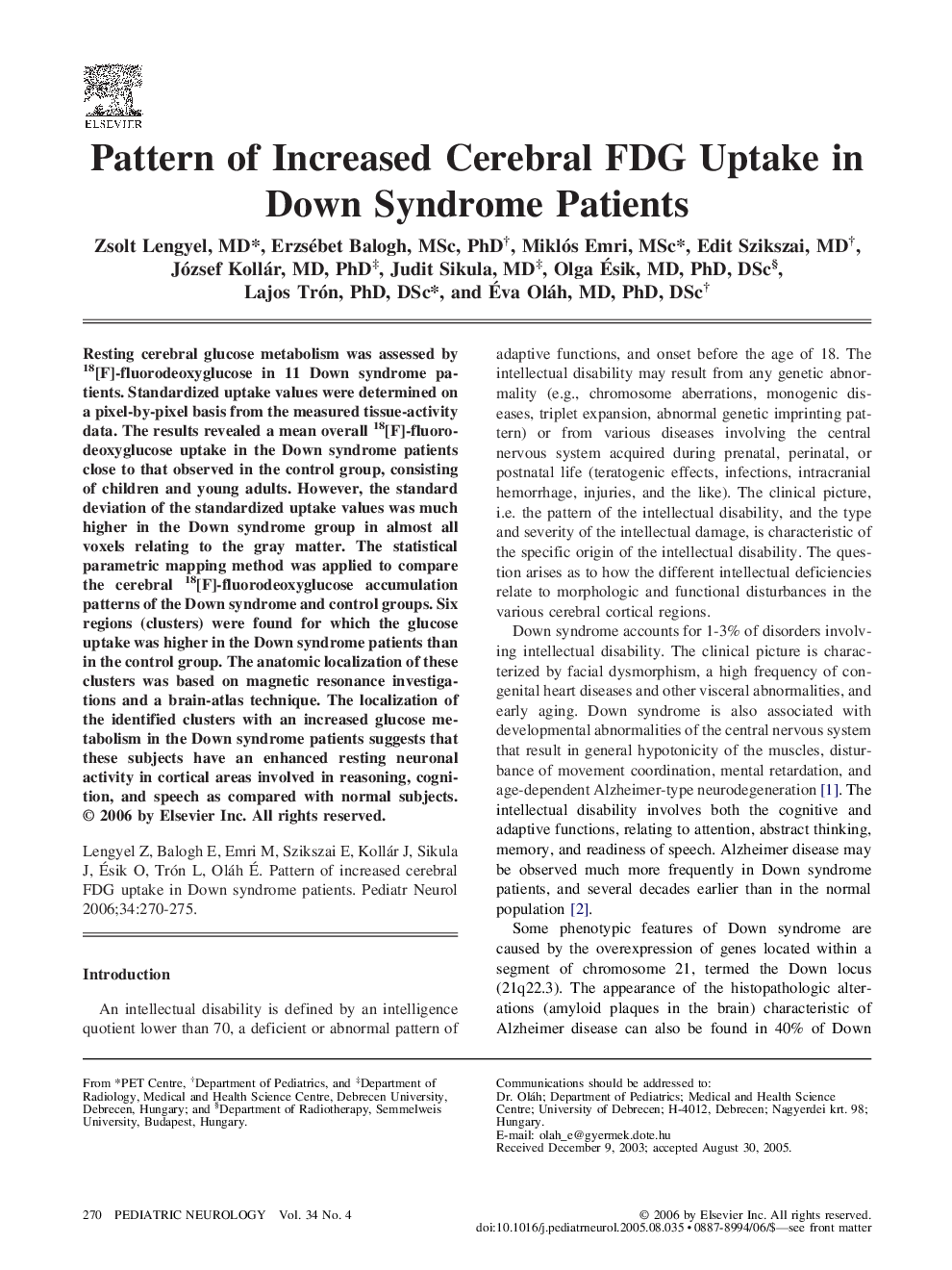| Article ID | Journal | Published Year | Pages | File Type |
|---|---|---|---|---|
| 3086556 | Pediatric Neurology | 2006 | 6 Pages |
Abstract
Resting cerebral glucose metabolism was assessed by 18[F]-fluorodeoxyglucose in 11 Down syndrome patients. Standardized uptake values were determined on a pixel-by-pixel basis from the measured tissue-activity data. The results revealed a mean overall 18[F]-fluorodeoxyglucose uptake in the Down syndrome patients close to that observed in the control group, consisting of children and young adults. However, the standard deviation of the standardized uptake values was much higher in the Down syndrome group in almost all voxels relating to the gray matter. The statistical parametric mapping method was applied to compare the cerebral 18[F]-fluorodeoxyglucose accumulation patterns of the Down syndrome and control groups. Six regions (clusters) were found for which the glucose uptake was higher in the Down syndrome patients than in the control group. The anatomic localization of these clusters was based on magnetic resonance investigations and a brain-atlas technique. The localization of the identified clusters with an increased glucose metabolism in the Down syndrome patients suggests that these subjects have an enhanced resting neuronal activity in cortical areas involved in reasoning, cognition, and speech as compared with normal subjects.
Related Topics
Life Sciences
Neuroscience
Developmental Neuroscience
Authors
Zsolt MD, Erzsébet MSc, PhD, Miklós MSc, Edit MD, József MD, PhD, Judit MD, Olga MD, PhD, DSc, Lajos PhD, DSc, Ãva MD, PhD, DSc,
